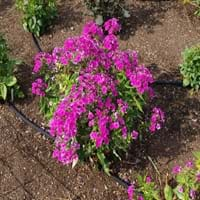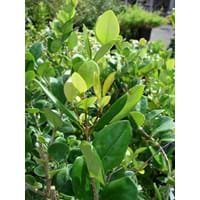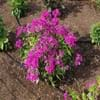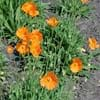Life Span
Perennial
Annual
Type
Trees
Broadleaf Evergreen
Origin
Northeastern United States, Mid-Atlantic United States, Southeastern United States, North-Central United States, Central United States, South-Central United States, Canada
Eastern Asia
Types
Blue Ice, Eventide, Starfire
Not Available
Number of Varieties
Not Available
Habitat
Dappled Shade, Shady Edge, Woodland Garden
foothill woods, Hills, Lowland
USDA Hardiness Zone
4-8
7-10
AHS Heat Zone
8-1
Not Available
Sunset Zone
1a, 1b, 2a, 2b, 3a, 3b, 4, 5, 6, 7, 8, 9, 10, 11, 12, 13, 14, 18, 19, 20, 21
21,22
Habit
Upright/Erect
Upright/Erect
Minimum Height
Not Available
Minimum Width
Not Available
Flower Color
Purple, Magenta
White
Flower Color Modifier
Bicolor
Bicolor
Fruit Color
Not Available
Green, Black
Leaf Color in Spring
Chartreuse, Gold
Dark Green
Leaf Color in Summer
Chartreuse, Gold
Dark Green
Leaf Color in Fall
Chartreuse, Yellow green, Tan
Dark Green
Leaf Color in Winter
Not Available
Dark Green
Leaf Shape
Ovate
Acicular
Plant Season
Summer, Fall
Spring, Summer, Fall, Winter
Sunlight
Full Sun, Partial Sun
Full Sun, Partial Sun, Partial shade
Type of Soil
Clay, Loam, Sand
Loam, Sand
The pH of Soil
Acidic, Neutral, Alkaline
Acidic, Neutral, Alkaline
Soil Drainage
Well drained
Average
Bloom Time
Summer, Late Summer, Early Fall, Fall
Late Spring, Early Summer, Summer
Tolerances
Not Available
Drought, Salt
Where to Plant?
Ground
Ground
How to Plant?
Seedlings
Rooted stem cutting, Stem Cutting, stem tip cuttings
Plant Maintenance
Medium
Medium
Watering Requirements
Average Water Needs, Doesn't tolerate standing water
Average Water Needs, Do not water frequently
In Summer
Lots of watering
Lots of watering
In Spring
Moderate
Moderate
In Winter
Average Water
Average Water
Soil pH
Acidic, Neutral, Alkaline
Acidic, Neutral, Alkaline
Soil Type
Clay, Loam, Sand
Loam, Sand
Soil Drainage Capacity
Well drained
Average
Sun Exposure
Full Sun, Partial Sun
Full Sun, Partial Sun, Partial shade
Pruning
Remove damaged leaves, Remove dead branches, Remove dead leaves
Remove damaged leaves, Remove dead branches, Remove dead leaves
Fertilizers
General purpose slow-acting granular fertilizer
All-Purpose Liquid Fertilizer, Apply N-P-K, fertilize in growing season
Pests and Diseases
Powdery mildew, Rust, Septoria leaf spot, Stem canker
Aphids, Bacterial leaf spot, Galls, Honey fungus, Red blotch, Wasps
Plant Tolerance
Drought
Drought, Full Sun, Shade areas, Variety of soil types
Flower Petal Number
Single
Single
Foliage Texture
Medium
Medium
Foliage Sheen
Matte
Glossy
Attracts
Butterflies
Aphids
Allergy
Pollen
Not Available
Aesthetic Uses
Borders, Ground Cover
Borders, Not Used For Aesthetic Purpose
Beauty Benefits
Not Available
Not Available
Environmental Uses
Air purification
Air purification
Medicinal Uses
No Medicinal Use
Antibacterial, Hypotensive, Tonic
Part of Plant Used
Not Available
Leaves
Other Uses
Used as Ornamental plant
Used as an ingredient in coffee
Used As Indoor Plant
No
No
Used As Outdoor Plant
Yes
Yes
Garden Design
Cutflower, Feature Plant, Mixed Border, Wildflower
Container, Foundation, Hedges, Mixed Border, Screening, Wind Break, Topiary, Bonsai, Espalier
Botanical Name
PHLOX paniculata 'Goldmine'
LIGUSTRUM japonicum
Common Name
Garden Phlox, Goldmine Phlox
Japanese Ligustrum
Waxleaf Ligustrum
Texas Privet
Waxleaf Privet
In Hindi
Goldmine Phlox
Japanese Privet
In German
Goldgrube Phlox
japanische Privet
In French
Phlox Goldmine
Privet japonaise
In Spanish
Phlox Goldmine
Privet japonesa
In Greek
Goldmine Phlox
Ιαπωνικά Privet
In Portuguese
Phlox Goldmine
Privet Xapanese
In Polish
Goldmine Phlox
Xapanese Privet
In Latin
.org Phlox
Japanese Privet
Phylum
Magnoliophyta
Tracheophyta
Class
Magnoliopsida
Magnoliopsida
Family
Polemoniaceae
Oleaceae
Clade
Angiosperms, Asterids, Eudicots
Angiosperms, Asterids, Eudicots
Tribe
Phlocideae
Not Available
Subfamily
Polemonioideae
Not Available
Number of Species
Not Available
Importance of Goldmine Phlox and Japanese Privet
Want to have the most appropriate plant for your garden? You might want to know the importance of Goldmine Phlox and Japanese Privet. Basically, these two plants vary in many aspects. Compare Goldmine Phlox and Japanese Privet as they differ in many characteristics such as their life, care, benefits, facts, etc. Every gardener must at least have the slightest clue about the plants he wants to plant in his garden. Compare their benefits, which differ in many ways like facts and uses. The medicinal use of Goldmine Phlox is No Medicinal Use whereas of Japanese Privet is Antibacterial, Hypotensive and Tonic. Goldmine Phlox has beauty benefits as follows: Not Available while Japanese Privet has beauty benefits as follows: Not Available.
Compare Facts of Goldmine Phlox vs Japanese Privet
How to choose the best garden plant for your garden depending upon its facts? Here garden plant comparison will help you to solve this query. Compare the facts of Goldmine Phlox vs Japanese Privet and know which one to choose. As garden plants have benefits and other uses, allergy is also a major drawback of plants for some people. Allergic reactions of Goldmine Phlox are Pollen whereas of Japanese Privet have Not Available respectively. Having a fruit bearing plant in your garden can be a plus point of your garden. Goldmine Phlox has no showy fruits and Japanese Privet has no showy fruits. Also Goldmine Phlox is not flowering and Japanese Privet is not flowering . You can compare Goldmine Phlox and Japanese Privet facts and facts of other plants too.





